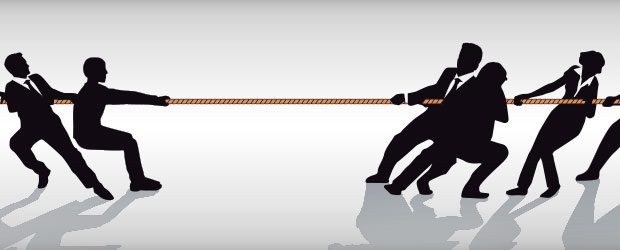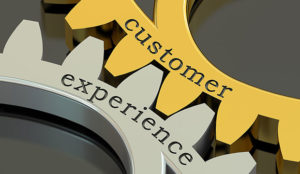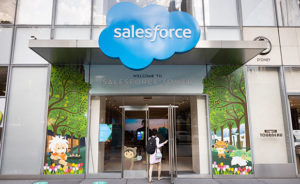Last week my good friends Brent Leary and Paul Greenberg opened up their online show, CRM Playaz, to an executive roundtable discussion with some of the movers and shakers in our CRM world.
On hand to discuss the future of CRM were:
- Suresh Vittal, VP Experience Cloud Platform and Products, Adobe;
- Alysa Taylor, CVP Business Applications and Global Industry, Microsoft;
- Rob Tarkoff, EVP/GM of CX, Oracle;
- Bill Patterson, EVP/GM CRM Applications, Salesforce; and
- Bob Stutz, President, CX, SAP.
Yours truly was also there to lend my thoughts once the CRM executives had offered theirs.
I know almost all of them and they are friends. They acquitted themselves well in outlining their views of where CRM is going; and since they are the top of the food chain in their respective companies, there is a close correlation between their views and the direction of their CRM programs. As it should be.
With all that as preface I looked askance at the discussion. Unfailingly, each speaker espoused the centrality of the customer and visibility through 360 degrees of customer interaction. It’s hard to disagree with that — though I will.
A Little History
The customer has always been of central importance to any entity trying to sell something. Just for grins and giggles, I can trace customer centrality all the way back to the ancient Greek historian, Herodotus who described how merchants from Asia Minor would beach their boats and sell their wares to the locals. When you beach your boat, you have to hang around for at least twelve hours before you can take off and Herodotus describes some big boats and the need to beach them for several days to sell out.
There’s nothing like being stranded in a foreign land to make a merchant want to ensure the complete customer satisfaction. So, customer 360, or whatever you want to call it, has a deep history that supersedes anything we’ve done with software in the last 25 years — or whatever we might think up in the next.
Still, the idea of seeing the customer in full stays with us for a very good reason. Customer orientation has to be learned by each generation of people who wish to work in customer-facing industries. Even in Herodotus’ time, merchants were far from perfect. He reports that when the boats were nearly empty of cargo and the tide was rising, it was a perfect time for stealing women, who most of the customers were, and sailing off.
Unwittingly, Herodotus also documents one of the earliest uses of the logical fallacy, the non sequitur, when he quotes the merchants saying, “We didn’t steal your women, they wanted to come with us.” He also uses this common case as an example of how the Trojan War started when Paris, a prince from Asia Minor, abducted Helen who was married to Menelaus, king of Sparta, a warrior-led Greek city-state. It didn’t end well for Paris or Troy.
But that’s literally ancient history.
Companies and Their Cultures
Last week’s festival du customer, I think, exposes multiple deficiencies in our approach to CRM. First, it diminishes differentiation at a time when vendors should want to emphasize it. If everyone is all about customers, then how do you choose among them? It’s reminiscent of the political season when everyone is for apple pie, hot dogs, and motherhood. Besides, what else is there except the customer?
Second, if customer centricity has been with us for millennia, then touting it is not very forward looking, though it supports the idea of generational adoption. Third, despite all of the technology available and the long history of CRM, user organizations still don’t get it.
My research, which I’ve quoted here before, shows that too many organizations still don’t employ the tools needed to support grandiose ambitions of customer centricity, especially when it comes to having and using AI and machine learning.
For this we need to look elsewhere, away from the CRM vendors who are churning out good, new functionality. We need to take a hard look at the companies themselves, and their cultures.
Sales Reps Scot-Free
What I see when I look at the CRM-consuming companies is a minority that use it strategically. The rest have a more or less consistent view that says we’ll take a little of this CRM stuff, but not too much lest we have to make serious changes.
These companies are too often afraid of their sales reps and consequently demand minimum compliance with entering data or sticking to a fact-based sales strategy.
Those companies are inconsistent as well. While they demand too little of sales, they demand rigorous accounting of marketing spend and require scrupulous record keeping in service settings even when that means updating multiple systems because their customer-facing systems are not well integrated.
There’s a strong trend in human nature to go with your gut, to make snap decisions and execute, rather than being more contemplative which might provide a better result.
Not long ago the psychologist, Daniel Kahneman, won a Nobel Prize in Economics for research that informs the foundations of behavioral economics and indirectly CRM. To be overly succinct, it turns out that people really do make rational decisions for emotional reasons.
My Two Bits
Somewhere in the hierarchy of each business, someone needs to take responsibility for ensuring that we make rational decisions in our customer-facing processes. This means not only adopting CRM and training our people in its use, but then insisting on it.
I think that’s where the leading edge is today. With all of the good technology available right now, the emphasis should be on training in CRM techniques, especially trusting the data. That’s a long way from simply teaching people where the enter key is, because we live in a vastly changed business environment.
We call it the digital disruption and that’s alliterative and catchy. But maybe we should be focusing on people-powered outreach.















































